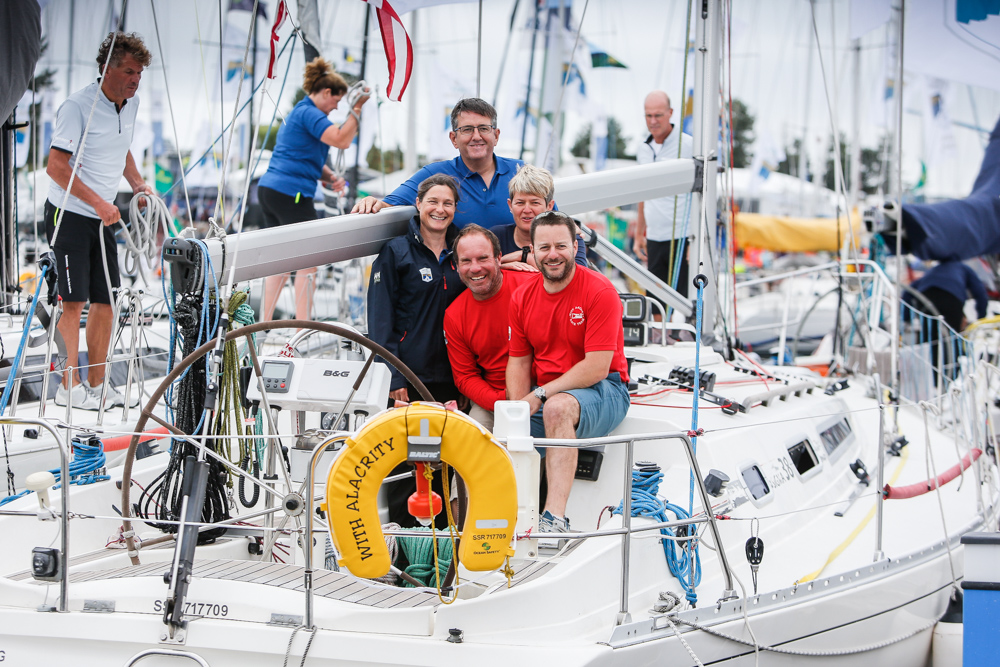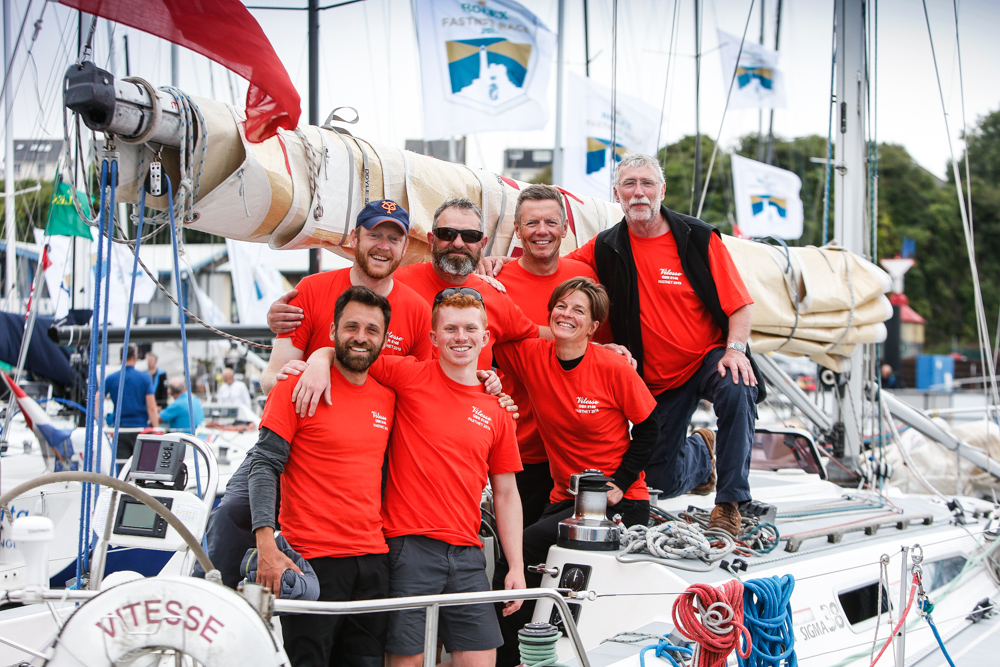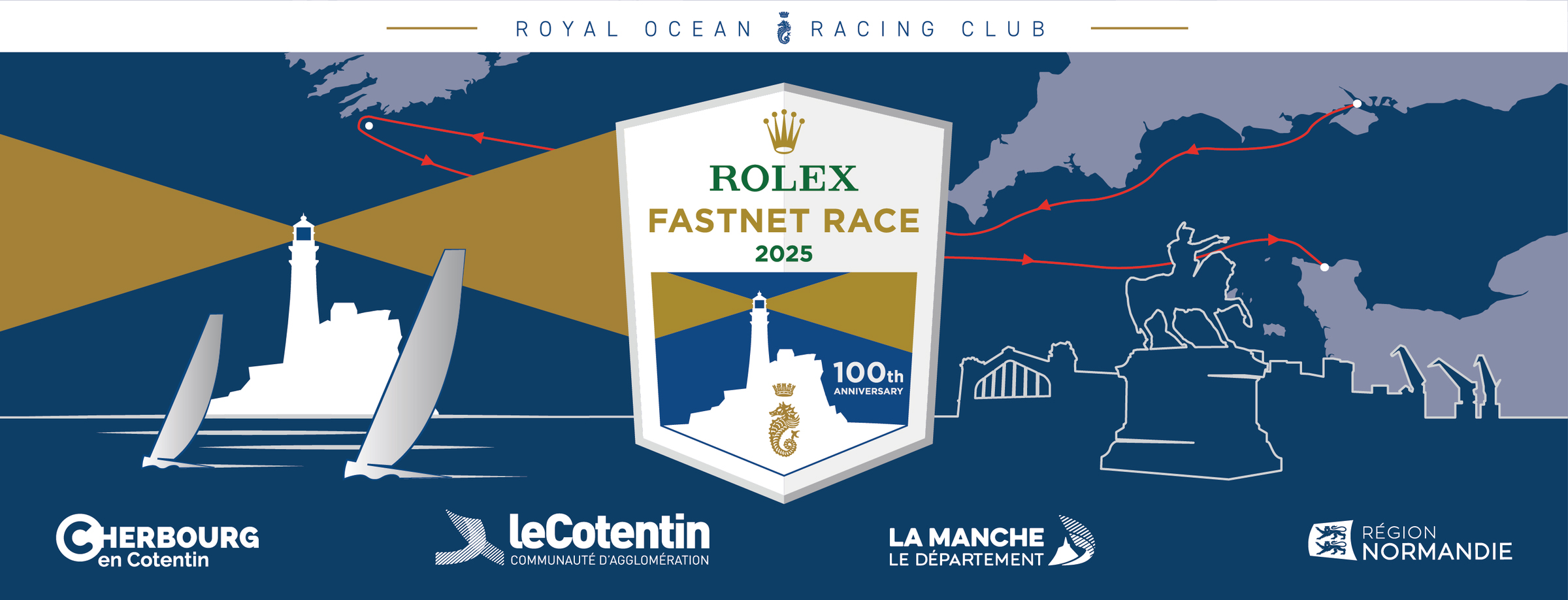

Sigma 38s hold a significant place in both the Royal Ocean Racing Club and Rolex Fastnet Race history. Following the 1979 Fastnet Race tragedy, in 1985 the David Thomas-design won a competition run by the RORC and the Royal Thames Yacht Club to design a yacht that could stand up to being raced in tough offshore conditions.
34 years on, seven Sigma 38s once again battled their way around the course in the 2019 Rolex Fastnet Race with Chris Choules' With Alacrity coming out on top. However Choules admits that his boat was optimised for IRC and is technically out of class, so official class honours have gone to Tim Levett's Machissmo II.
“We have got a slightly bigger spinnaker and we have had the boat weighed and measured for IRC,” says Choules.
However, significantly, the year’s reaching race resulted in With Alacity putting in what is believed to have been the fastest time a Sigma 38 has ever achieved in the RORC’s pinnacle event.
“We were pleased about that - we took six hours off the previous best Sigma 38 time,” says Choules. “That was quite surprising, but it was a very fast race: It was spinnaker from the Needles out past Portland Bill (which we’d never done before), and making it past Portland Bill before the tide turned (which we’d never done before) and then a fetch across the Irish Sea. It was incredibly fast. We are very pleased with how quickly we went around.”
During the race the big wind moments were a 28 knot squall they encountered outbound at the Scilly Isles and the solid breeze they had power-reaching back from the Rock in waves.
“From six hours after the Scillies, the wind didn’t drop below 20 knots and it typically stayed at 24-25 knots,” said Choules of their Celtic Sea crossing.
But the most uncomfortable was the fetch across to Ireland.
“It was TWA 60° and the boat slamming into the waves – everyone was feeling uncomfortable and trying to hang on down below. We were debating about whether we would prefer a proper beat to the Fastnet rock in less wind or a power reach that was faster but more painful…”
However, the most alarming moment occurred suddenly coming back past the Scillies.
“We were going downwind with the spinnaker up and it was fairly relaxing,” recounted Choules. “There was a bit there were we knew there’d be some overfalls so I said I’d helm because it could be a bit choppy. Because the weather was so nice, I was helming without wearing waterproofs but then there were two random freak waves, which must have been 10-12ft high and we surfed down their face at 18-20 knots and the spinnaker reversed, the back of the boat didn’t climb out of the wave and the wave came straight over the cockpit, straight down the companionway. The people at the nav table got their boots filled with water…
“It was like the Fastnet Race saying ‘you can’t relax, we still have more in store for you…’”
 Vitesse, Jon England's Sigma 38, arrives in Plymouth at the finish of the Rolex Fastnet Race © Paul Wyeth/www.pwpictures.com
Vitesse, Jon England's Sigma 38, arrives in Plymouth at the finish of the Rolex Fastnet Race © Paul Wyeth/www.pwpictures.com
Some 18 hours later, Jon England’s Vitesse brought up the rear among the Sigma 38s. England has campaigned Vitesse for 20 years, since the heyday of the class when typically twenty boats would be on the start line of the Rolex Fastnet Race. “This was my 10th Fastnet on this boat…” he says.
Of this year’s race, England said: “It was tough at the beginning but very nice in the end, apart from the last hour or so when the wind died near the finish line and the tide was running out pushing us away from the line. We were just tacking backwards and forwards within a few feet of the finish line for about an hour before we eventually got across…”
During the race England said the most wind they saw was a steady force 6-7 throughout the Celtic Sea crossing. The southwest to westerly breeze that had been blowing for several days had whipped up a tricky sea state. “It was quite choppy - very difficult down below,” admitted England, whose best results previously was in 2005 when they finished 18th overall and won the Hobo Trophy for the best one design.
This year Machismo II will be claiming the Hobo Trophy at tonight’s prizegiving at 1800 within the Plymouth race village.
